
Nowadays, there are so many things we take for granted that make our lives as gardeners easier, compared to even half a decade ago; things such as being able to buy compost every day of the year, ordering bulbs from suppliers far and wide and having access to new plants year-round.
Before the advent and the rise in popularity of the humble plastic pot, you could only buy certain plants during specific months, as they became available from the grower. Now you can get a pot of roses in July without much effort and get chrysanthemums in full bloom in the fall without having to nurture them for an entire year.
How did gardeners get plants before the popularization of the plastic pot? They bought them as bare-root perennials, shrubs and trees.
Here’s what this means: Growers dig out established plants when the plants are dormant or resting at the end of their growing season. These roots are stored without any soil and shipped when the plants are ready to go back into the ground.
What are the advantages of bare-root planting?
1. It’s more cost-effective.
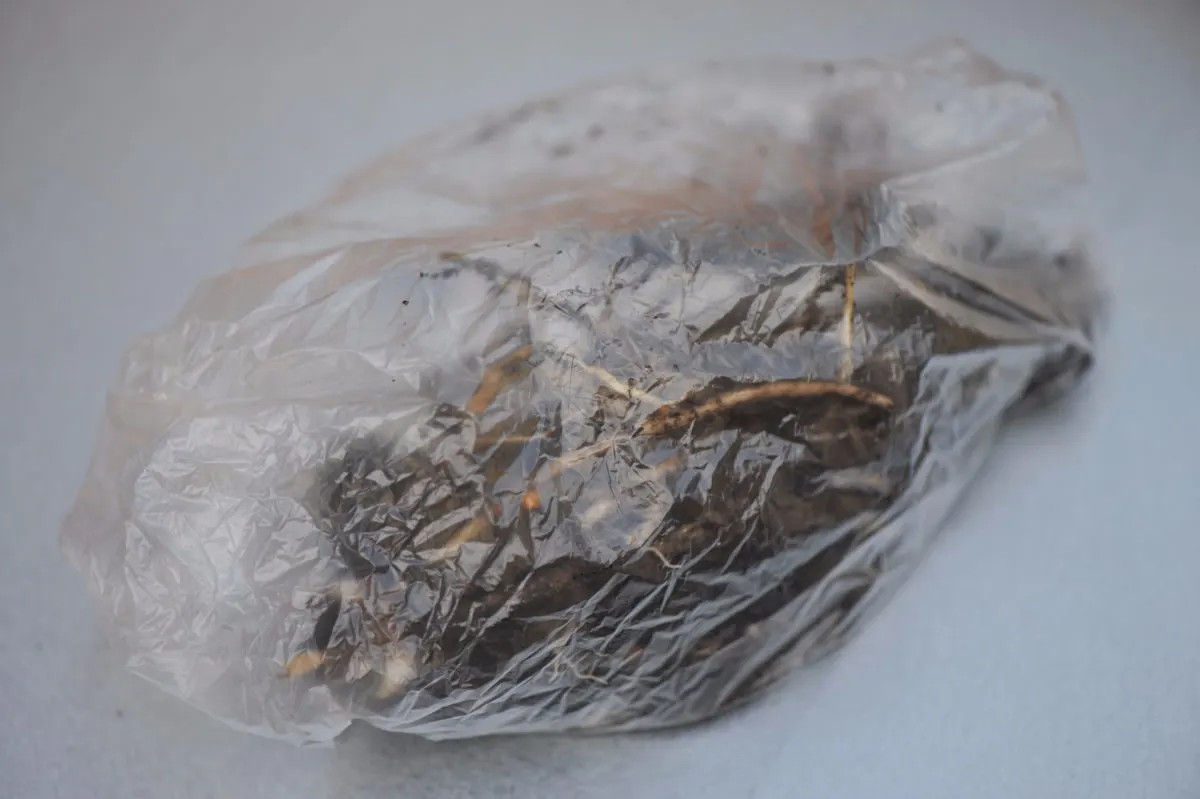
The grower is not spending money on potting soil, plastic containers, extra storage space or shipping heavy pots to vendors or straight to gardeners. This keeps the production costs down, so some of these savings are passed on to the end consumer.
In my experience, this becomes especially obvious when you’re buying bare-root shrubs. Anecdotally, I can get a set of three bare-root plants for the price of one potted shrub. This may not sound like real economizing, but if you’re just setting up your garden or are ramping up your landscaping, all these savings add up.
2. It’s more environmentally friendly.
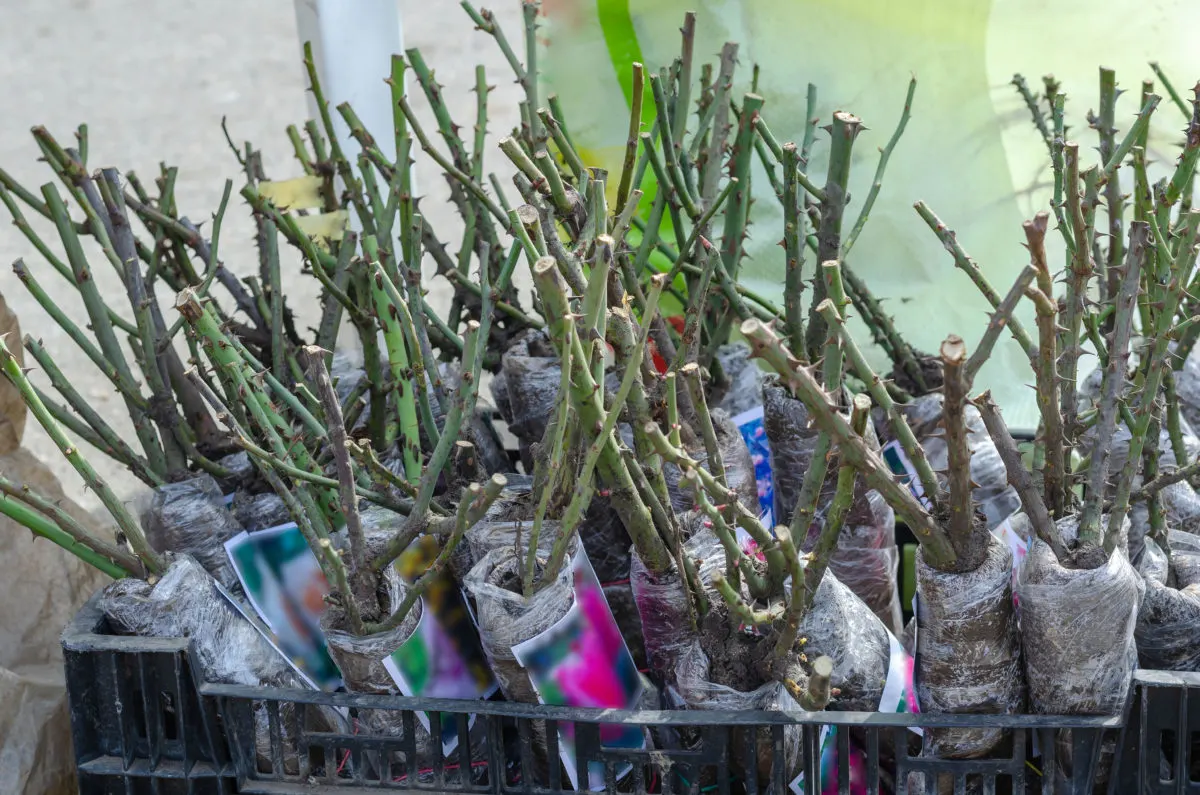
Largely for the same reasons, buying bare-root perennials becomes the eco-friendly choice. Less plastic, less shipping weight and I don’t have to add yet another plastic pot to my ever-growing collection.
3. You might get older plants for the same price.
Bare roots are easier to handle, logistically, than a full pot of dirt. Less weight means less hassle and not needing a large pot to accommodate a plant with a large root ball. So you can get dormant bare-root shrubs or trees that are more mature (older) than their potted counterparts.
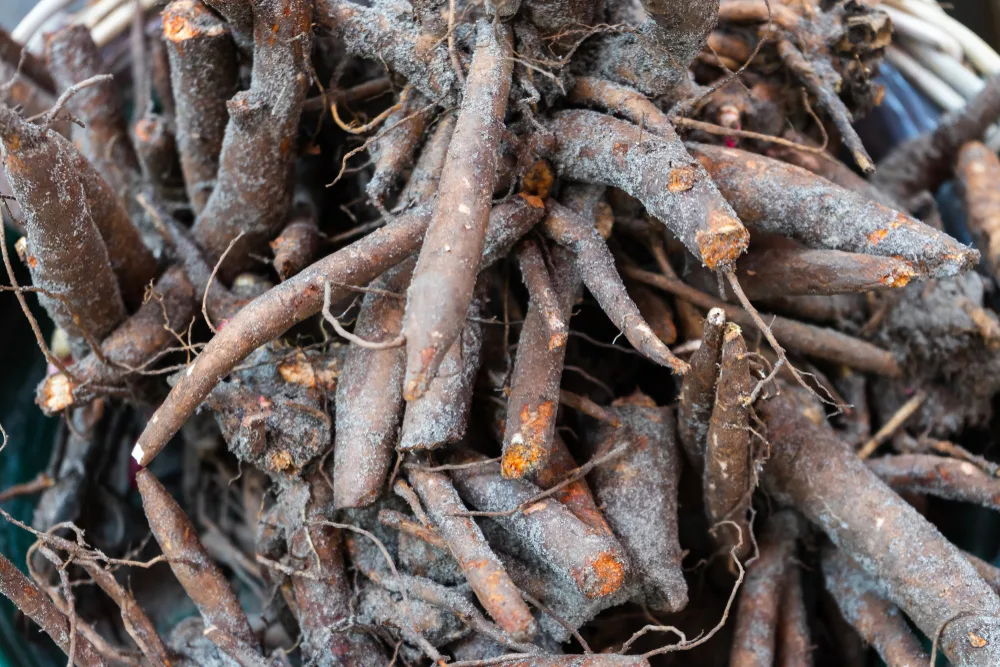
4. It’s easier to get bare roots in the ground.
Say you did get the large potted shrub delivered. You’ll need two people to carry the pot and position the large root ball into the ground. (Or at least I do; I’m not that strong.) With bare roots, they’re easy to carry and you don’t have to dig as much to accommodate the entire root ball plus the potting soil holding it together.
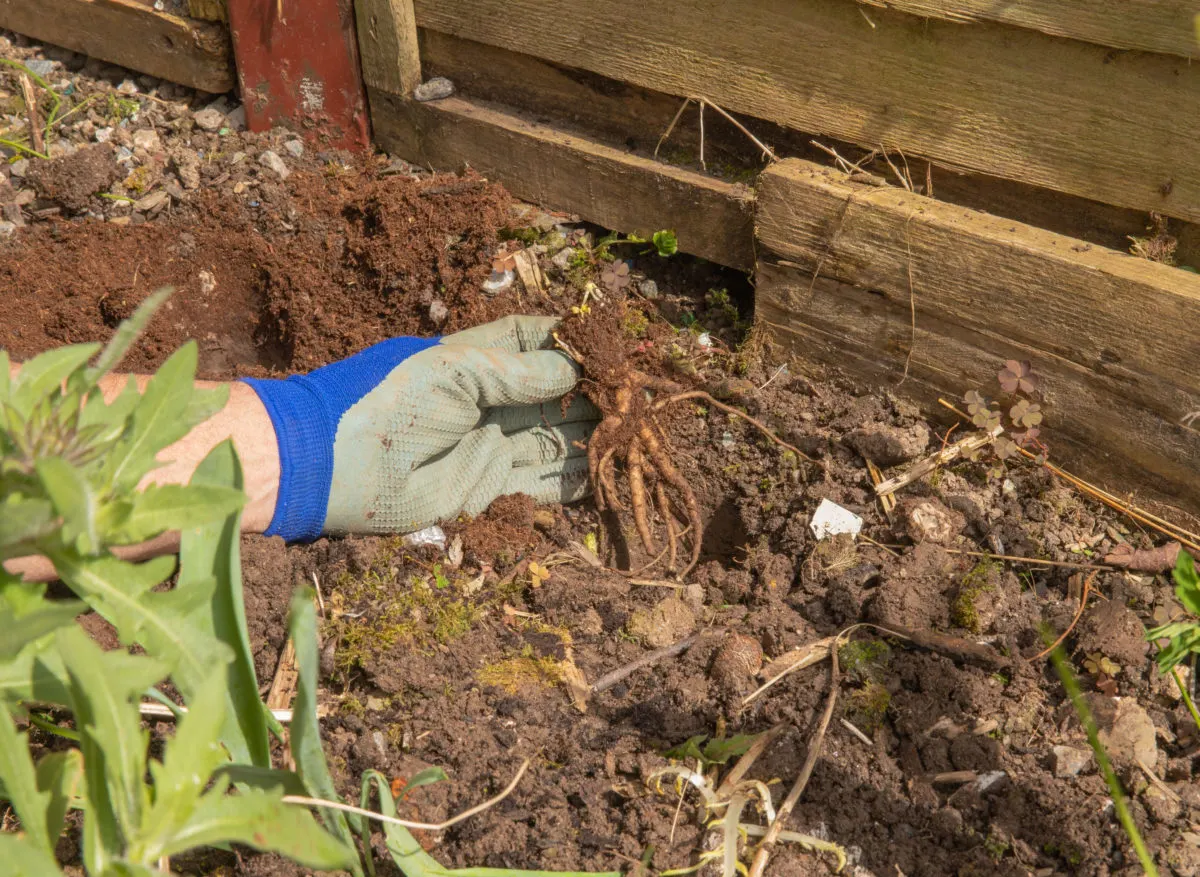
5. It’s easier to transition bare roots into the ground.
Bare-root perennials don’t get pot-bound. This often means that the root system is healthy and well-formed which, in turn, makes the transition to your garden easier. Provided you know when you plant them, of course (more on that below).
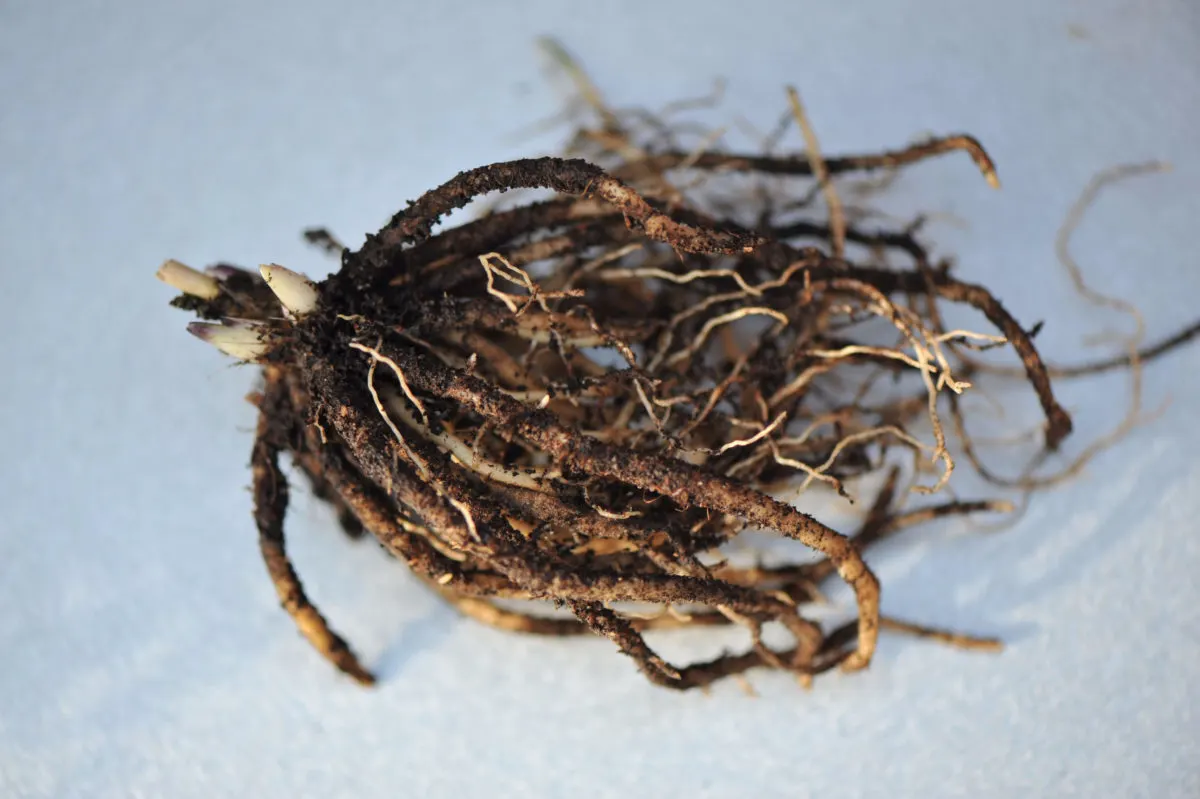
6. Buying bare roots is often the only organic option.
A large part of selling potted plants involves keeping them looking their best in order to entice buyers to pick them up and put them in their shopping carts. Keeping the foliage and blooms in good shape often involves using synthetic pesticides and fertilizers. But with bare-root plants, that element is taken out of the shopping equation – you only get a tangle of dry roots anyway, so there’s little need for the beauty contest gimmicks.
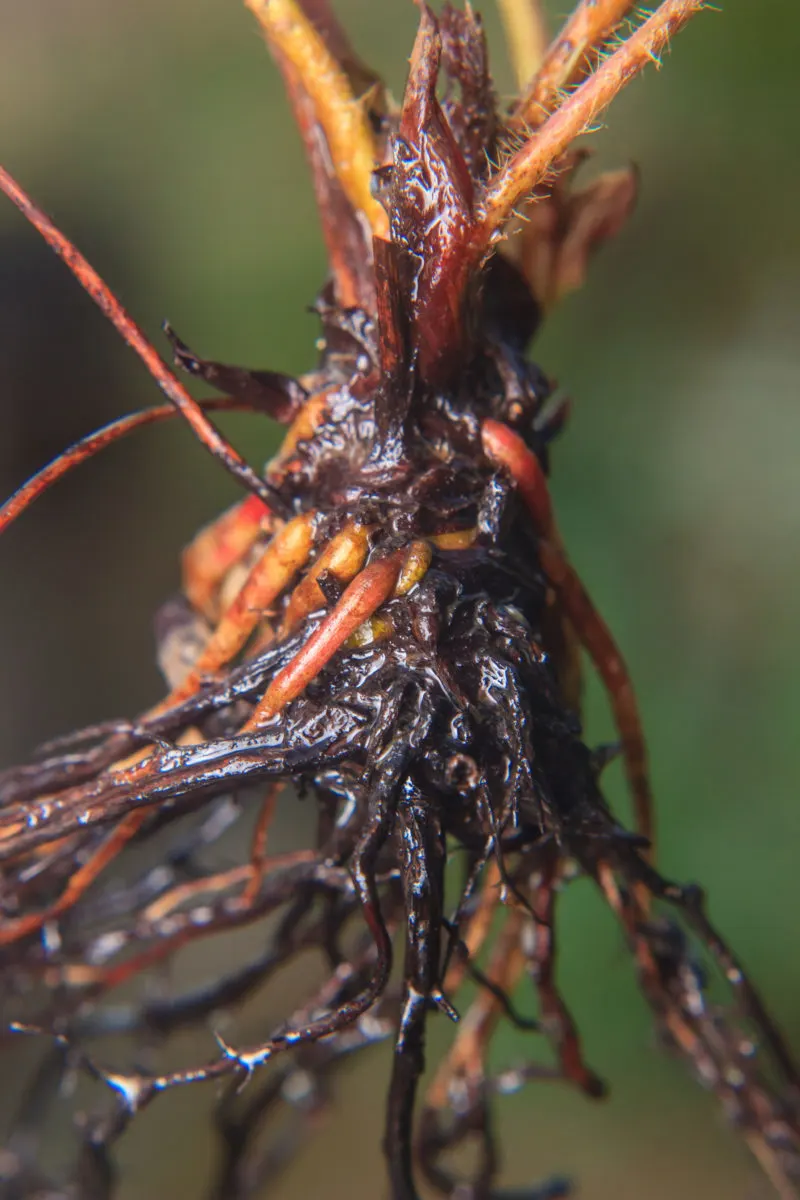
7. When you’re buying bare roots, you’re buying seasonally.
Bare-root plants are only available when the perennials are dormant. This offers an opportunity to garden with the seasons and return to a more natural rhythm that’s not dictated by instant gratification. I personally enjoy being mindful of these aspects and trying to counter my “I want it now” instinct in this age of next-day delivery.
When can I plant bare root perennials?
Bare-root perennials usually become available in late fall, in the winter or in early spring. This depends on the plant you’re looking for and the area you live in. But there’s no need to wait too long before you buy them. Many online vendors will accept pre-orders and will start shipping the plants as soon as they become available.
As I mentioned above, the plants need to have entered their period of dormancy or slow growth before they can be dug out of the ground and shipped. So patience is a virtue if you choose this method of planting.
Once you get the plant, it can go in the ground right away, as long as the ground isn’t frozen through. For most of the United States, this will be at any point from November until March, although the farther north you are, the longer your dormancy period extends. Another timing aspect to consider is that the longer the roots are in the ground in cool weather, the more time they’ll have to develop before top growth starts.
However, if you’ve got your bare-root delivery and you’re not ready yet to plant it in your garden, you have two options:
Keep storing it dry.
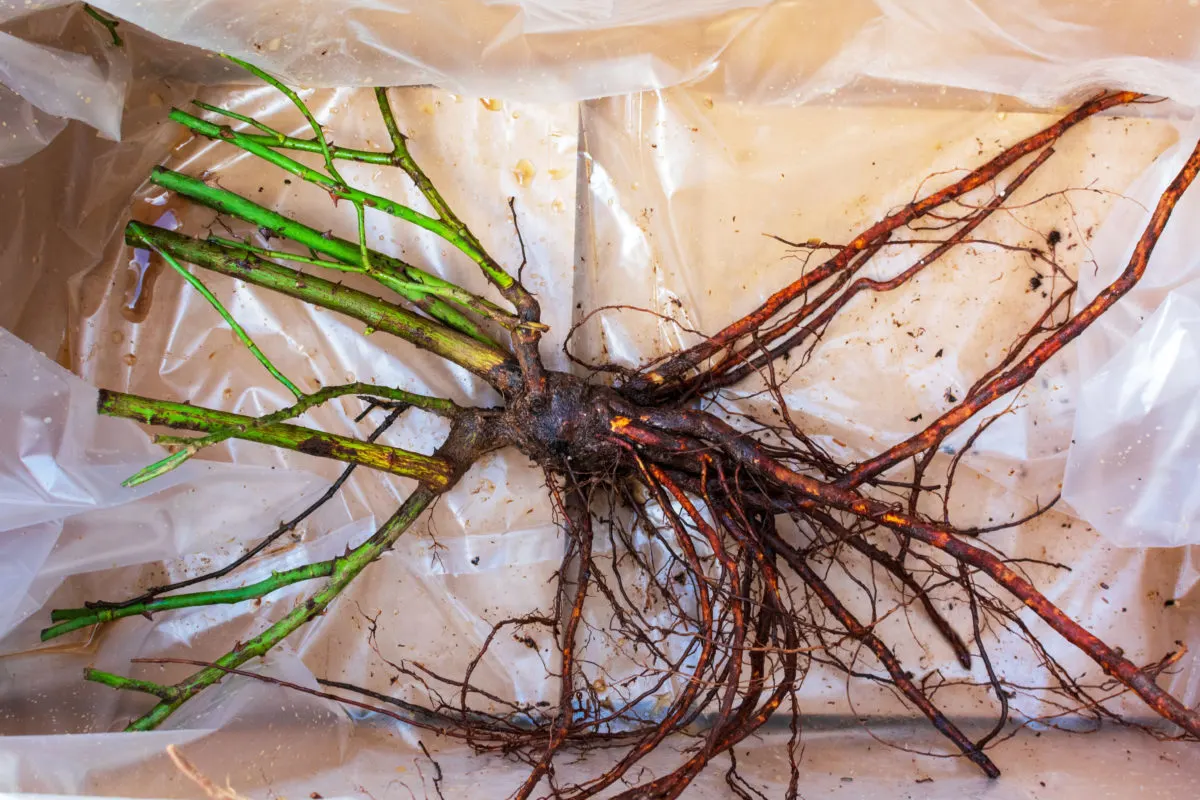
You can store your bare-root perennials in a cool, dry place until you’re ready to plant them. But keep in mind that exposure to humidity and warmth might break their dormancy prematurely. Keeping them in a cellar, garage or shed that doesn’t go below freezing is a good option.
Plant them in temporary accommodation.
This entails planting the bare roots in a pot and keeping this container in a cold (but not freezing) location until the ground has thawed enough to allow you to transplant the roots.
You can also plant the roots in a temporary place in the garden, preferably in a sheltered location. This process is called “heeling in” and the goal is to prevent the roots from drying out before they’re ready to go to their final home. Don’t procrastinate on moving them to their final location; you need to do that before the plants start to grow again in spring.
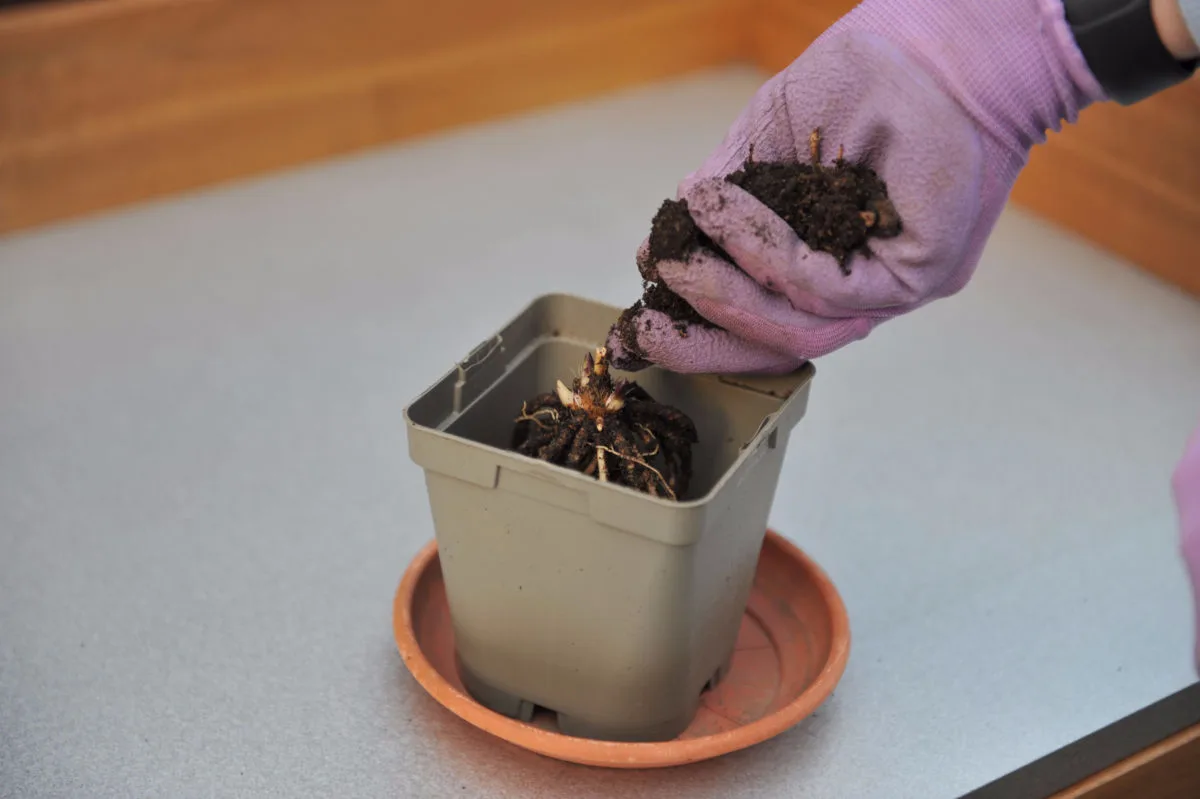
How do I plant bare-root perennials?
Ok, so you got your bare root order in and you’re ready to plant it. Here’s what you should do:
Step 1: Soak the roots.
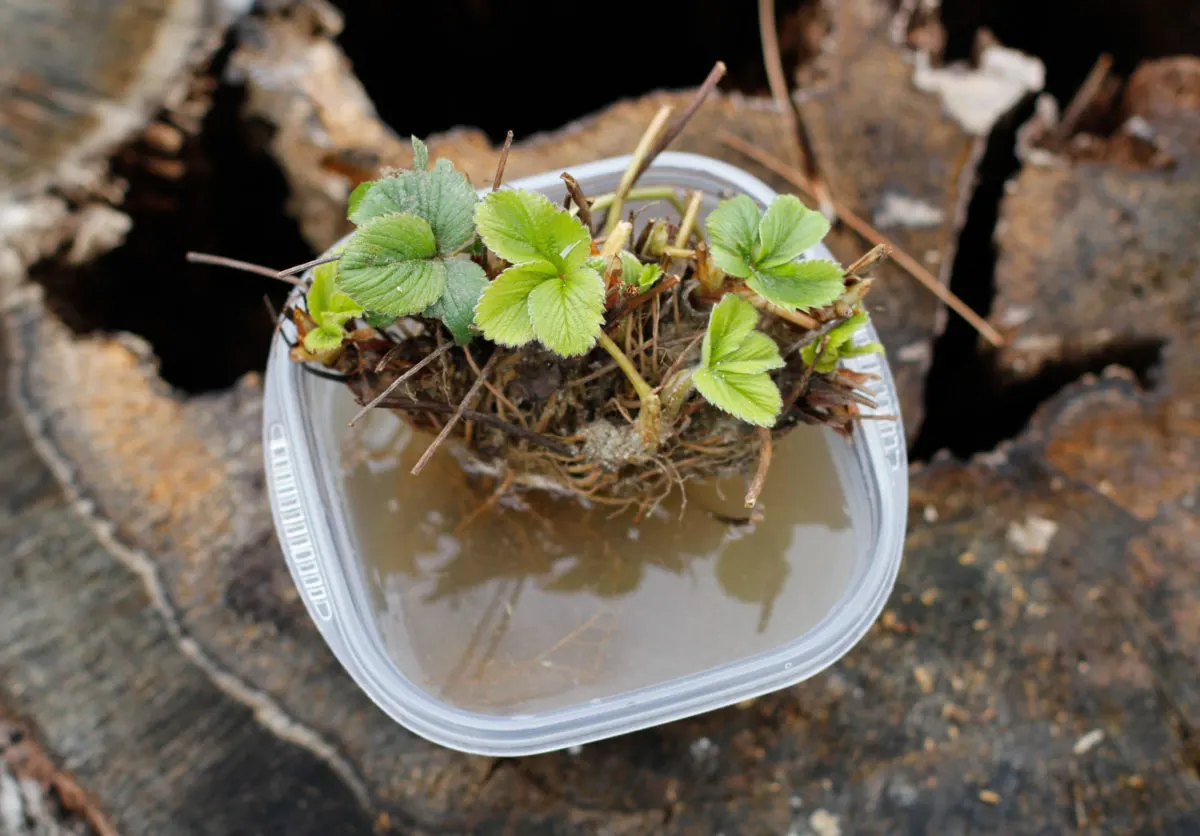
The first step to reinvigorate the bare roots is to completely immerse them in a bucket of water for a few hours. The roots need to regain their flexibility. Unless you’re planting roots that have just been dug from the ground (generally only the case if you got them from a neighbor or a local grower), it’s good practice to rehydrate the roots by giving them a good soak. About four to six hours should be enough, so definitely don’t forget to take them out of the water overnight.
Step 2: Prepare the planting area.
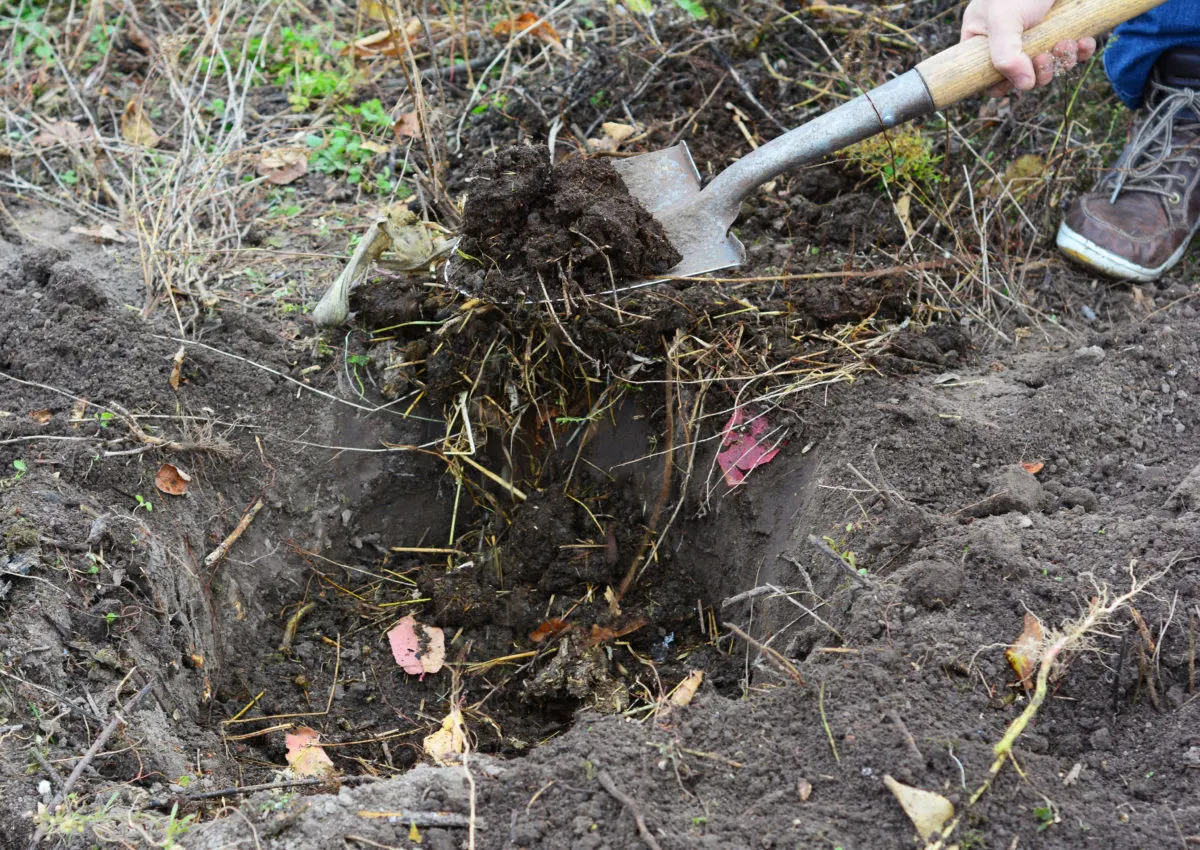
Dig a hole that’s about two times the size of the roots, both in width and in depth. The aim is to fit all the roots in the hole without twisting or bending them too much.
When you plant bare roots, always keep in mind the spacing of the mature plant. It’s easy to underestimate how much the plant will grow in diameter with only the roots as a guide.
At this point, you can give your perennials a headstart by amending the soil with fresh compost mixed with leaf mold.
Step 3: Plant the roots.
Before you put the roots in the ground, give them a quick look to remove any that may be damaged or dried out. Then place the roots in the hole at approximately the same depth that they were planted at before. Some roots will be shipped with a depth indicator (usually a ribbon tied around the stem). You might also be able to tell where the roots have been in the ground by examining the coloring on the stem – the part that was underground is generally darker and more woody.
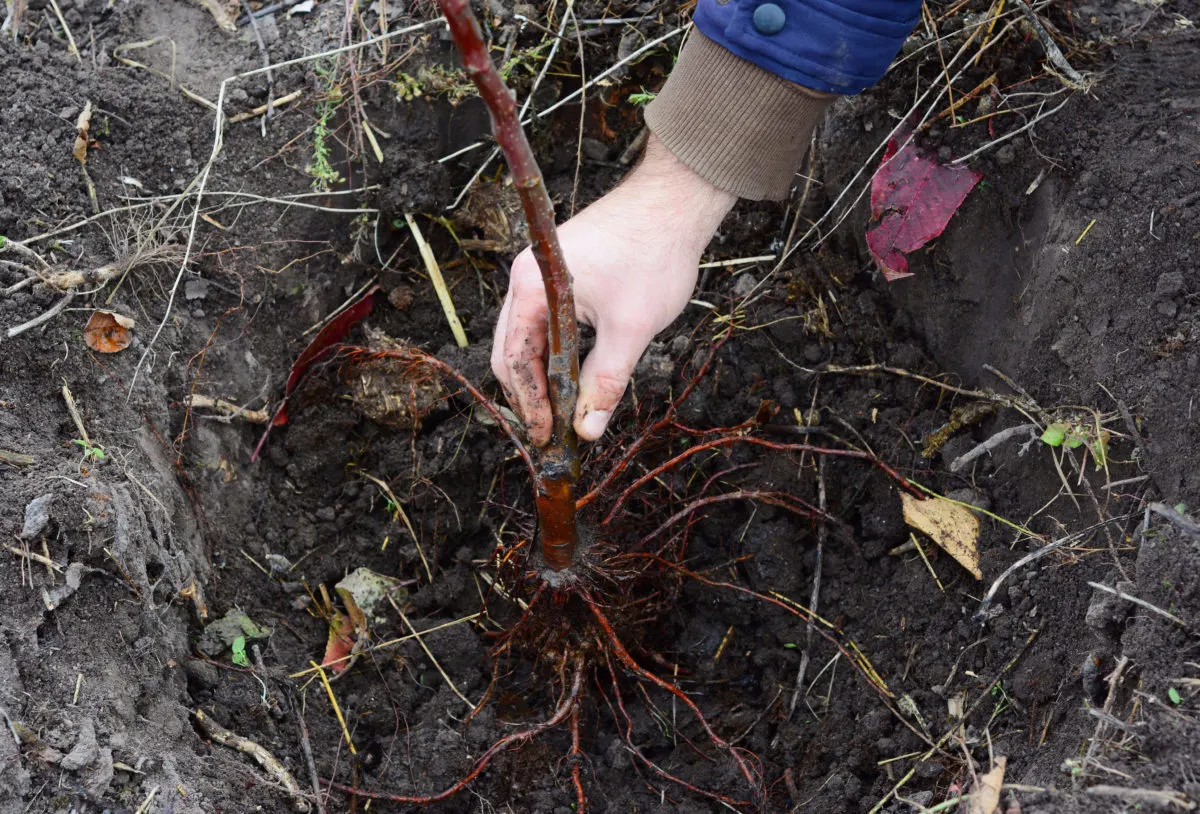
Place the roots in the ground, but make sure the crown of the plant stays above soil level. Start filling up the hole slowly making sure that the roots stay in place. If necessary, you can make a dirt mound in the middle of the hole to support the roots from below.
Then continue to top up with the remaining dirt. Water a few times in order to allow the soil to settle, then continue topping up.
Once the plant is in the ground, not much of it will be visible for a few months. So now’s the time to add a marker to make sure you don’t inadvertently damage the roots or plant anything too close to them.
Step 4: Mulch the area around the roots.
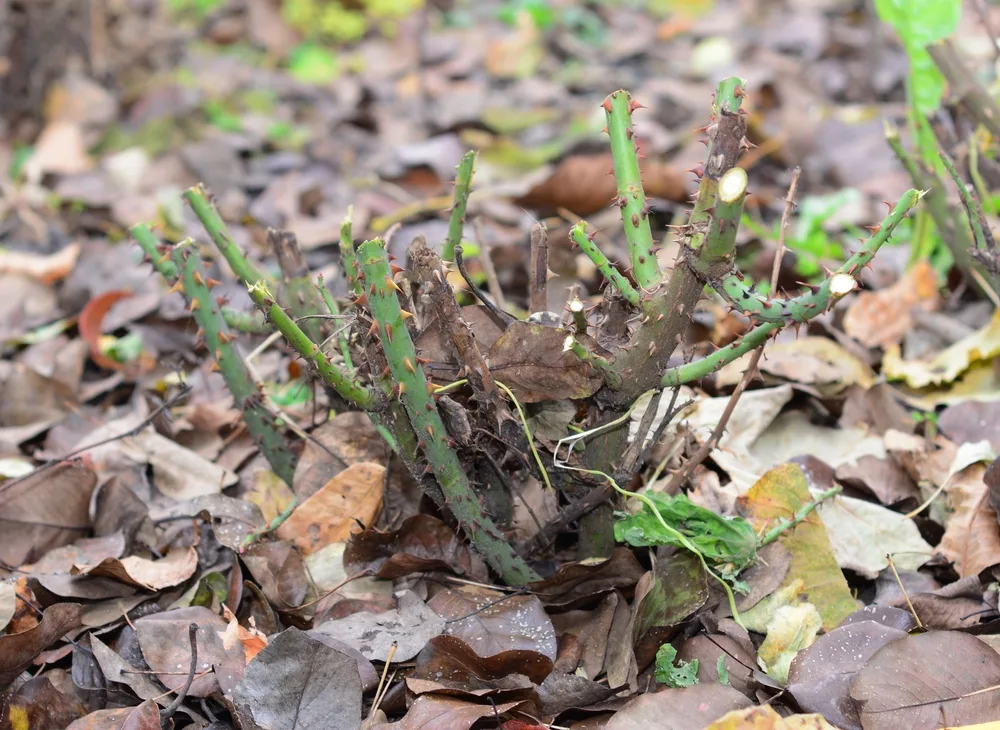
Once you’ve planted the bare roots, you need to do a bit of maintenance to ensure your perennials have the best chance of surviving.
First, always mulch the area around the roots making sure that the mulch doesn’t touch the crown. The purpose of mulching is to keep the temperature of the soil even and to prevent the soil from drying out too quickly. With bare roots, mulch will also help prevent weeds from taking over the area before the plant starts growing.
Step 5: Keep watering the bare roots.
It takes about a month for the roots to become active enough and start taking in water for the entire plant. So that’s why it’s important to keep watering the roots, especially if you’re not getting enough rain, to prevent them from drying out again.
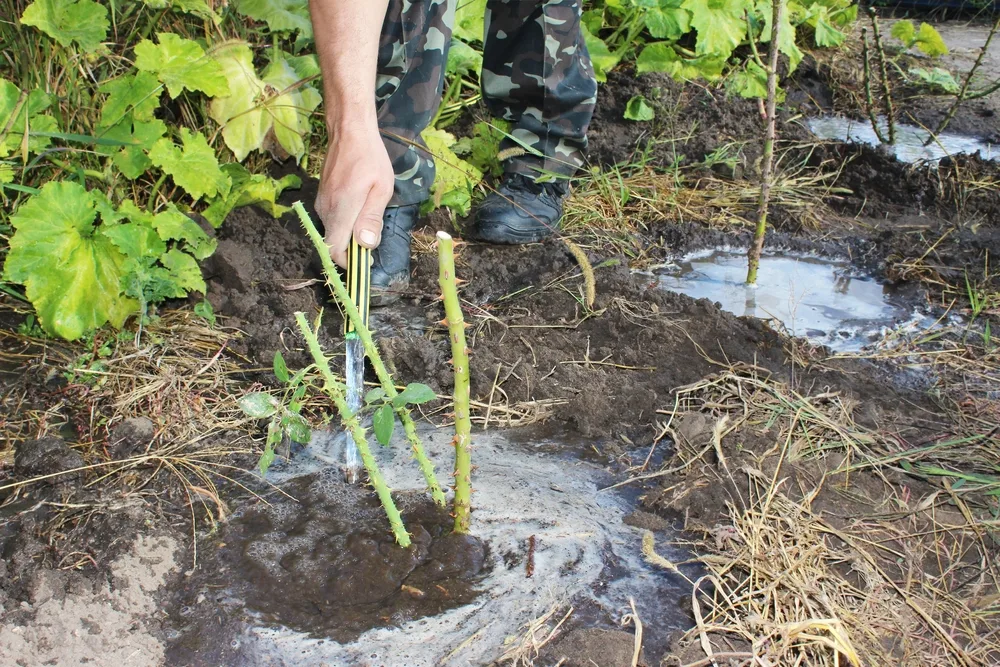
Over the course of the first month, you can taper down the watering as the weeks go by. Try to keep the soil evenly moist, but not too soggy.
You can continue watering this perennial over the first growing season to help it establish a strong root structure.
What plants can I buy bare root?
The most common plants sold bare root are roses. But in addition to that, you can also buy bushes, hedges, shrubs, hardy perennials and ornamental and fruit trees as bare roots. In general, online vendors will either have a “bare roots” category in their store, or the mention “this plant ships bare root” in the product description.
A few popular perennials that you can buy bare root include:
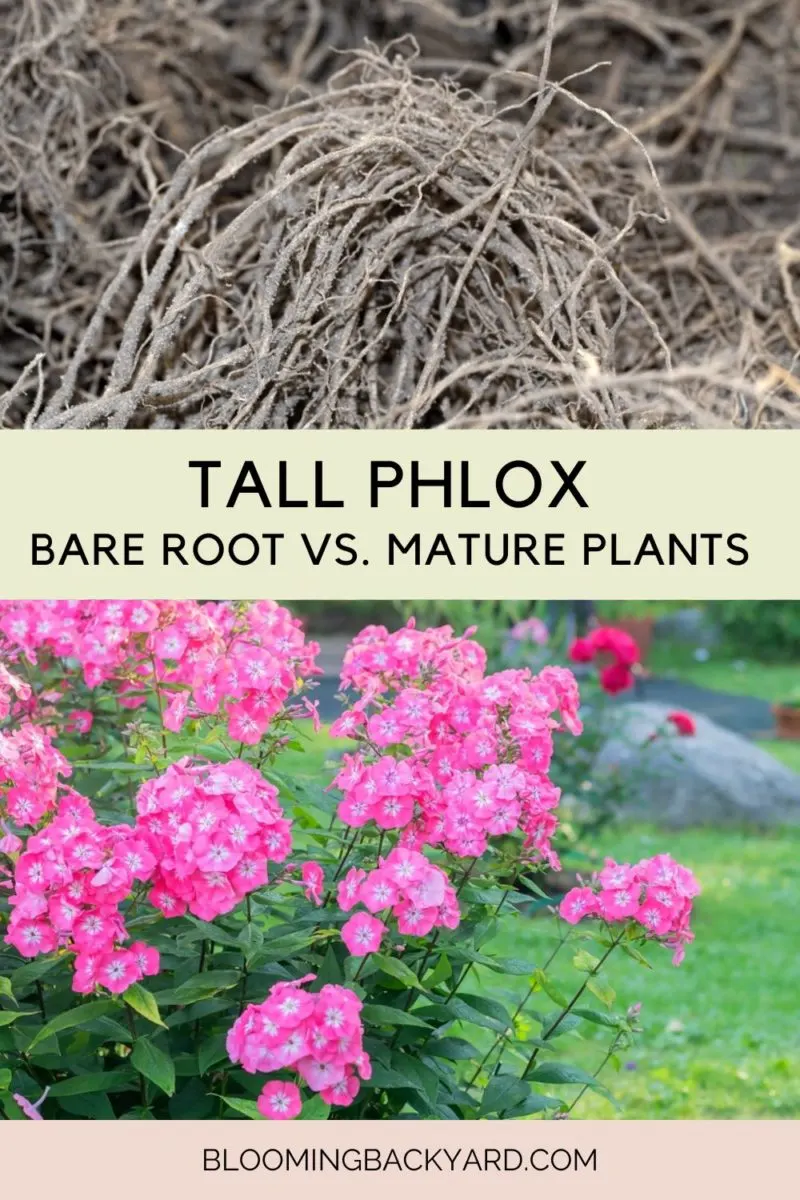
Tall phlox
Peonies
Daylilies
Hostas
Heuchera (coral bells)
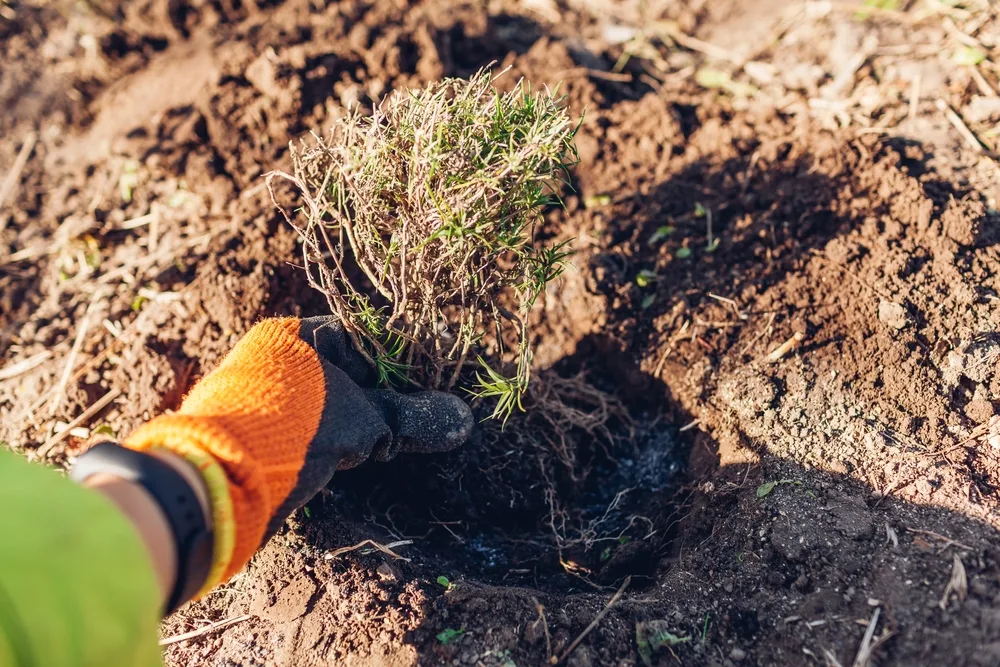
Moss phlox
Astilbe
Eryngium
Geraniums
Agapanthus
Penstemon
Russian sage
Agastache
English lavender
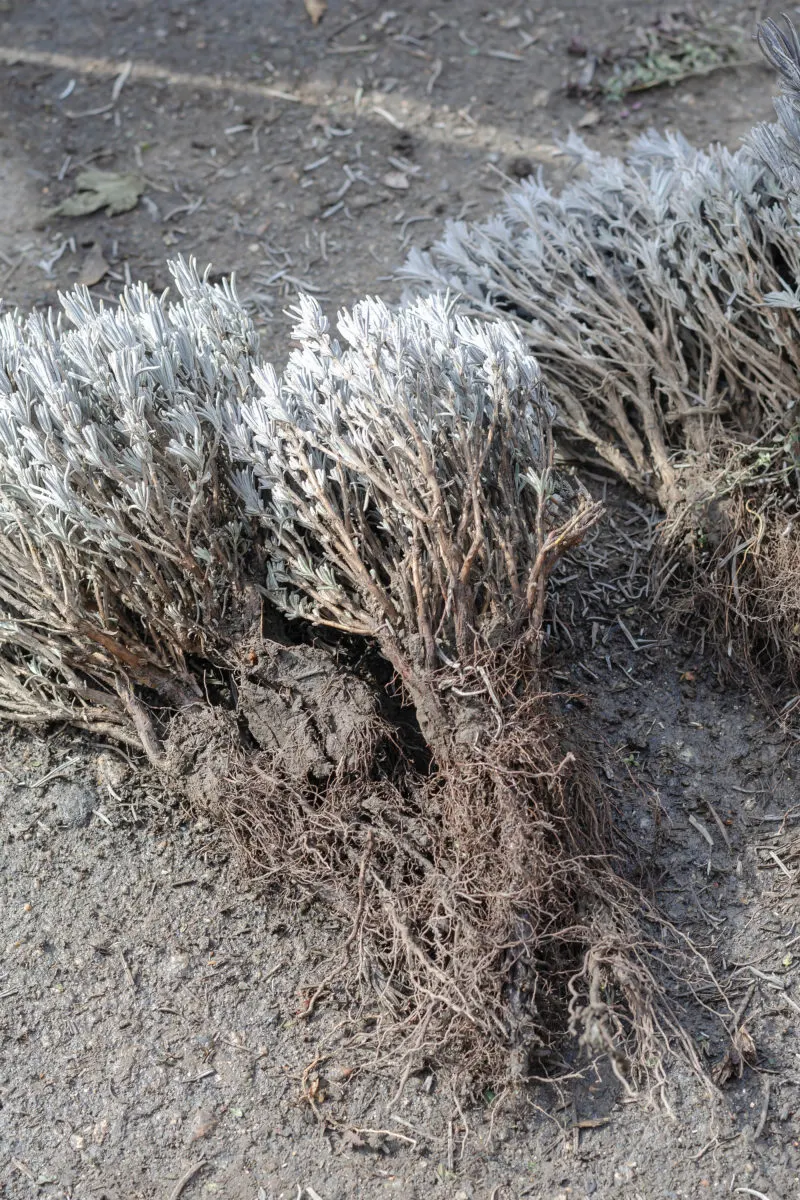
A few popular shrubs that you can buy bare root include:
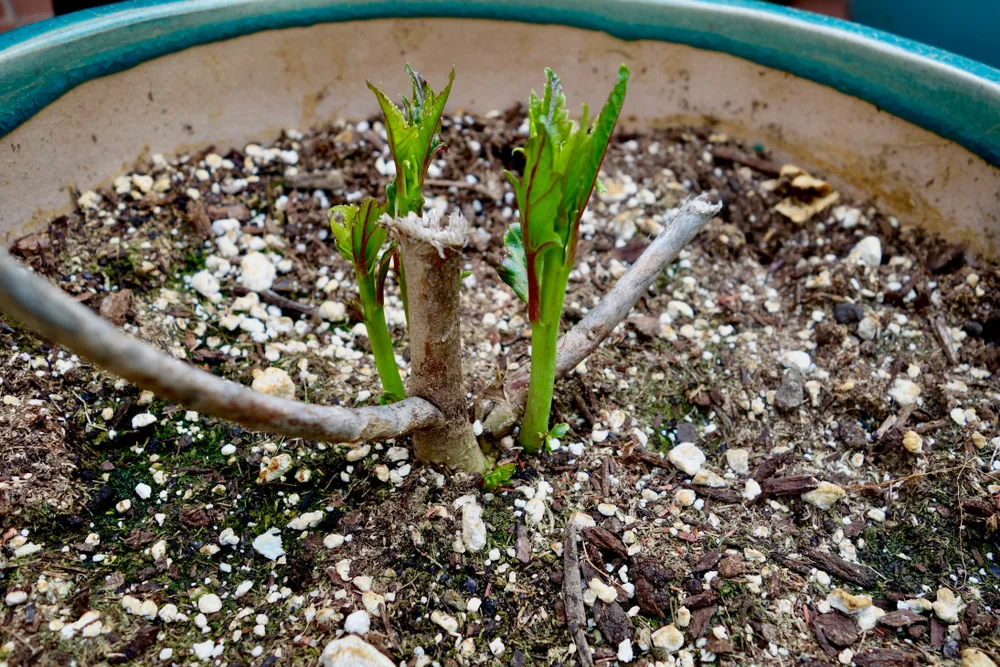
Hibiscus
Rose of Sharon
Forsythia
Lilac
Mockorange
Roses
Red twig dogwood
Planting bare-root perennials takes a bit of getting used to. If, like me, you’re a more visual person, planting a handful of twigs might not inspire much of a thrilling gardening sensation. But I guarantee your heart will flutter at the sight of the young growth that will burst out of that muddle of twigs come spring.
